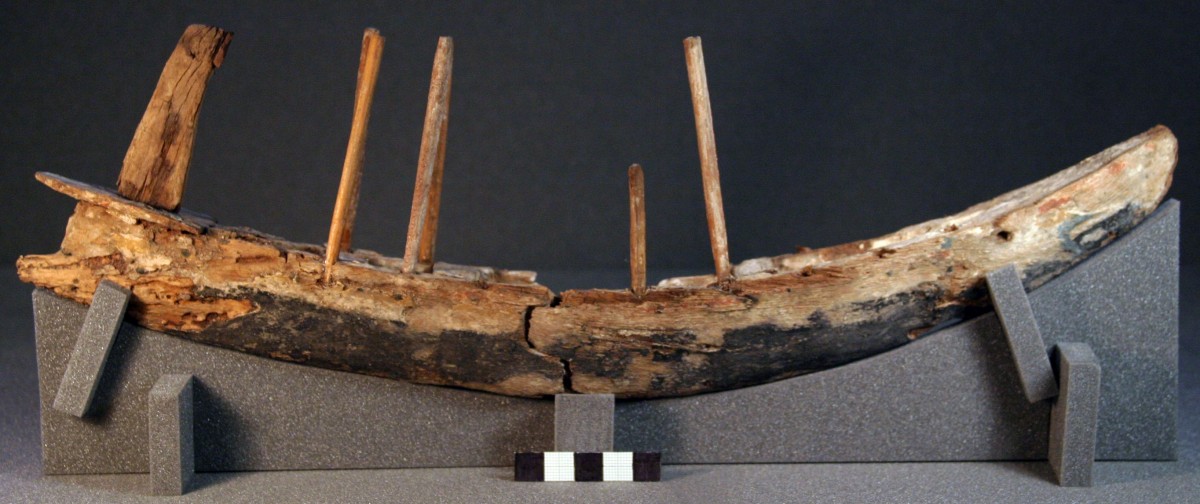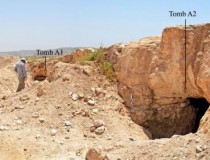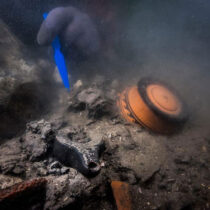When Shelley Wachsmann began his analysis of the small ship model excavated by assistants of famed Egyptologist W. M. F. Petrie in Gurob, Egypt, in 1920, he expected to produce a brief monograph on the ship type it represented. Instead, Wachsmann, a professor of Biblical Archaeology at Texas A&M University, discovered that the model was depicting a type similar to the oared ships used by the Bronze Age Mycenaean Greeks.
As a type, the ship can be characterised as a pentakonter and as a representation is the most detailed one that has ever been found. It bears a typical Helladic bird-head decoration topping the stempost, with holes along the sheer strakes confirming the use of stanchions. Found with four wheels and other evidence for a wagon-like support structure, it can be connected with European cultic prototypes. Contemporaneous textual evidence for Sherden—one of the Sea Peoples—settled in the region suggests that the model may be patterned after a galley of that culture. So, although found in Egypt, the prototype of the Gurob model was clearly an Aegean-style galley of a type used by both the Mycenaeans and the Sea Peoples.
So, does the ship really hold any clues to the identities and cultures of the Sea Peoples, or the religious practices of ancient Egypt and Greece? This is the question Professor Wachmann is trying to answer in his new book on the subject, entitled “The Gurob Ship-Cart Model and Its Mediterranean Context”. An expert on ships, seafaring and their cultural implications, he presents to the audience the ship and its context through the book’s pages as well as a set of online resources accompanying it (3D interactive images, high-resolution color photos of the model, maps and satellite photos of Gurob and other related materials).
You can discover the secrets of the Gurob ship model yourself by browsing through the online resources free:




